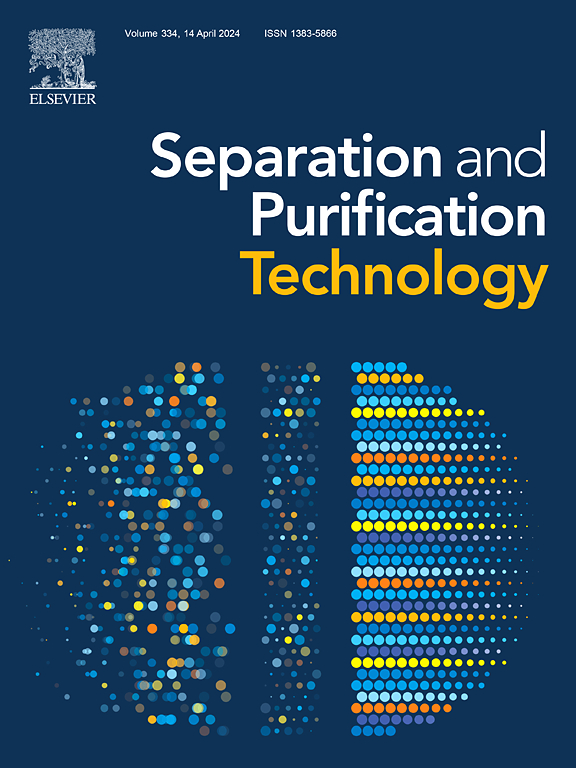Efficient alcoholysis of waste rigid polyurethane foam using MIL-101(Fe) catalyst
IF 8.1
1区 工程技术
Q1 ENGINEERING, CHEMICAL
引用次数: 0
Abstract
A considerable quantity of rigid polyurethane foam (RPUF) waste is generated on an annual basis as a consequence of the dismantling of refrigerators across the globe. In this study, waste RPUF from refrigerators was converted into recycled polyols by efficient alcoholysis, catalysed by a metal–organic framework (MOF). The experimental findings indicated that the utilisation of 5 wt% MIL-101(Fe) as a catalyst at 195 °C for a period of four hours resulted in a polyol yield of 78.3 %. Ligand modulation enabled the formation of a spatial structure within MIL-101(Fe), thereby facilitating the intercalation of polymers. This structure provided a supportive framework for domain-specific catalysis within the pores, thereby facilitating targeted catalytic alcoholysis of polyurethane. The viscosity of the polyol catalytically recovered using MIL-101(Fe) was maintained at approximately 670 mPa·s, and the hydroxyl value was maintained at over 270 mgKOH/g, which represent significantly improved values in comparison to those obtained through the traditional chemical alcoholysis method. Furthermore, the yield of recovered polyols over MOF catalysts remained above 65 % after nine cycles. It is a viable proposition to utilise recycled polyols in the synthesis of RPUFs in lieu of virgin polyols. The flexural strengths of the prepared RPUFs ranged from 0.257 to 0.355 MPa, and the water absorption ranged from 0.03 % to 0.08 %. thereby offering a novel approach to the treatment of rigid polyurethane waste.


求助全文
约1分钟内获得全文
求助全文
来源期刊

Separation and Purification Technology
工程技术-工程:化工
CiteScore
14.00
自引率
12.80%
发文量
2347
审稿时长
43 days
期刊介绍:
Separation and Purification Technology is a premier journal committed to sharing innovative methods for separation and purification in chemical and environmental engineering, encompassing both homogeneous solutions and heterogeneous mixtures. Our scope includes the separation and/or purification of liquids, vapors, and gases, as well as carbon capture and separation techniques. However, it's important to note that methods solely intended for analytical purposes are not within the scope of the journal. Additionally, disciplines such as soil science, polymer science, and metallurgy fall outside the purview of Separation and Purification Technology. Join us in advancing the field of separation and purification methods for sustainable solutions in chemical and environmental engineering.
 求助内容:
求助内容: 应助结果提醒方式:
应助结果提醒方式:


